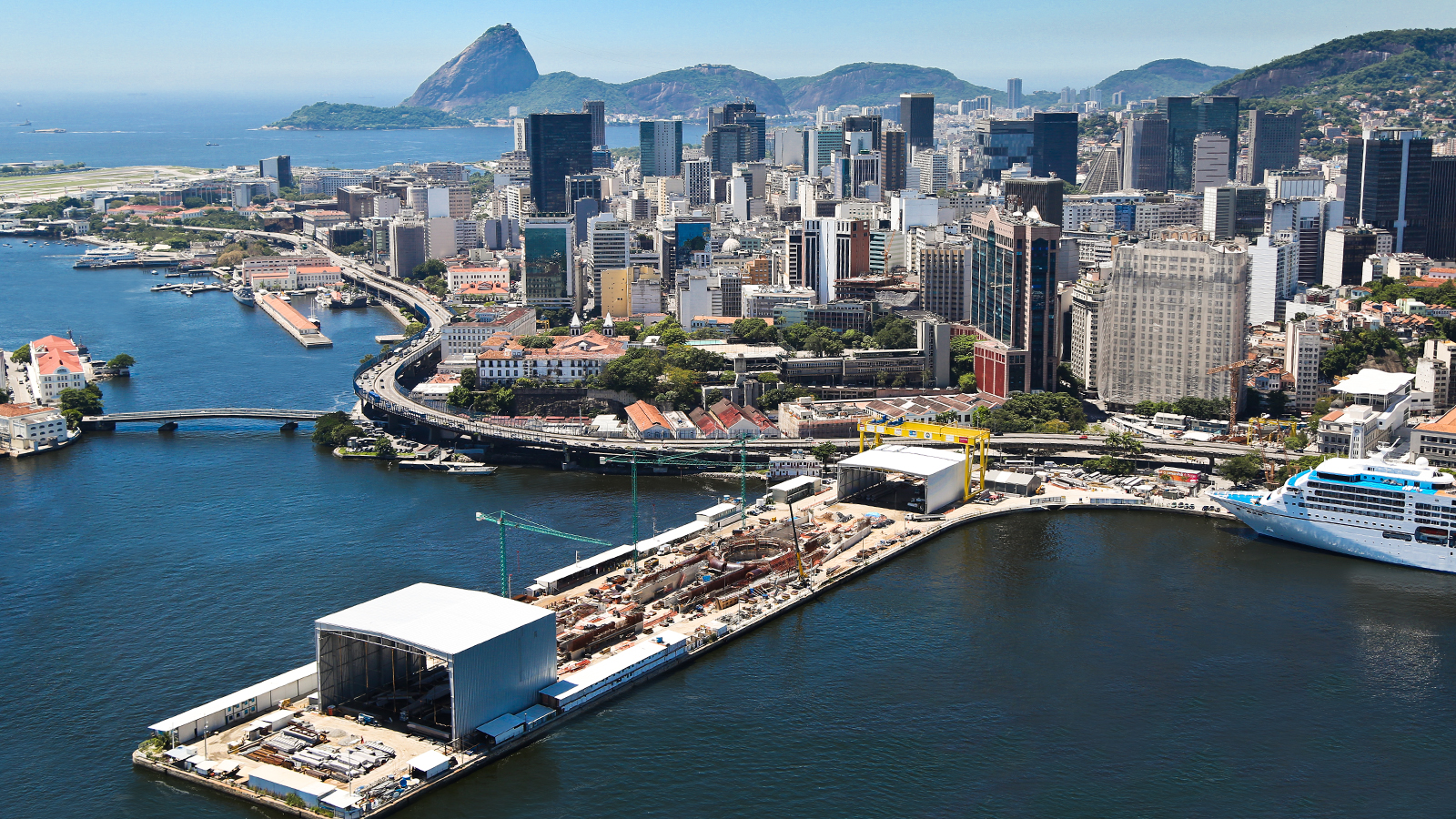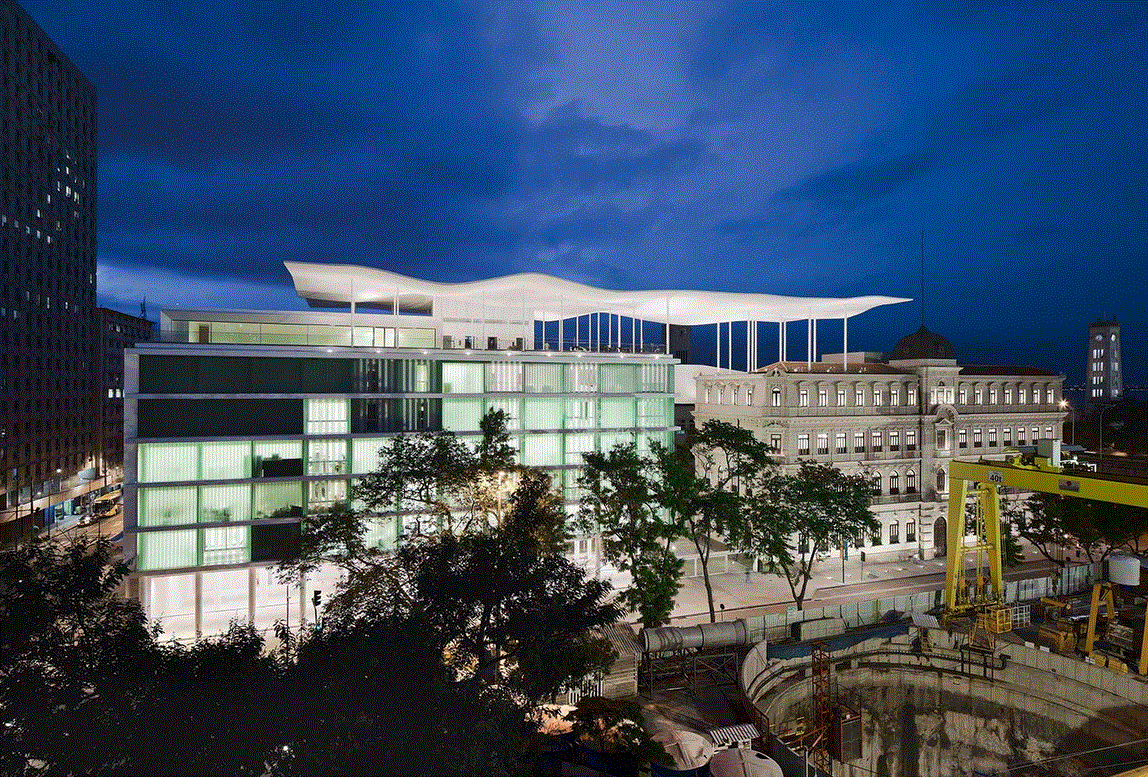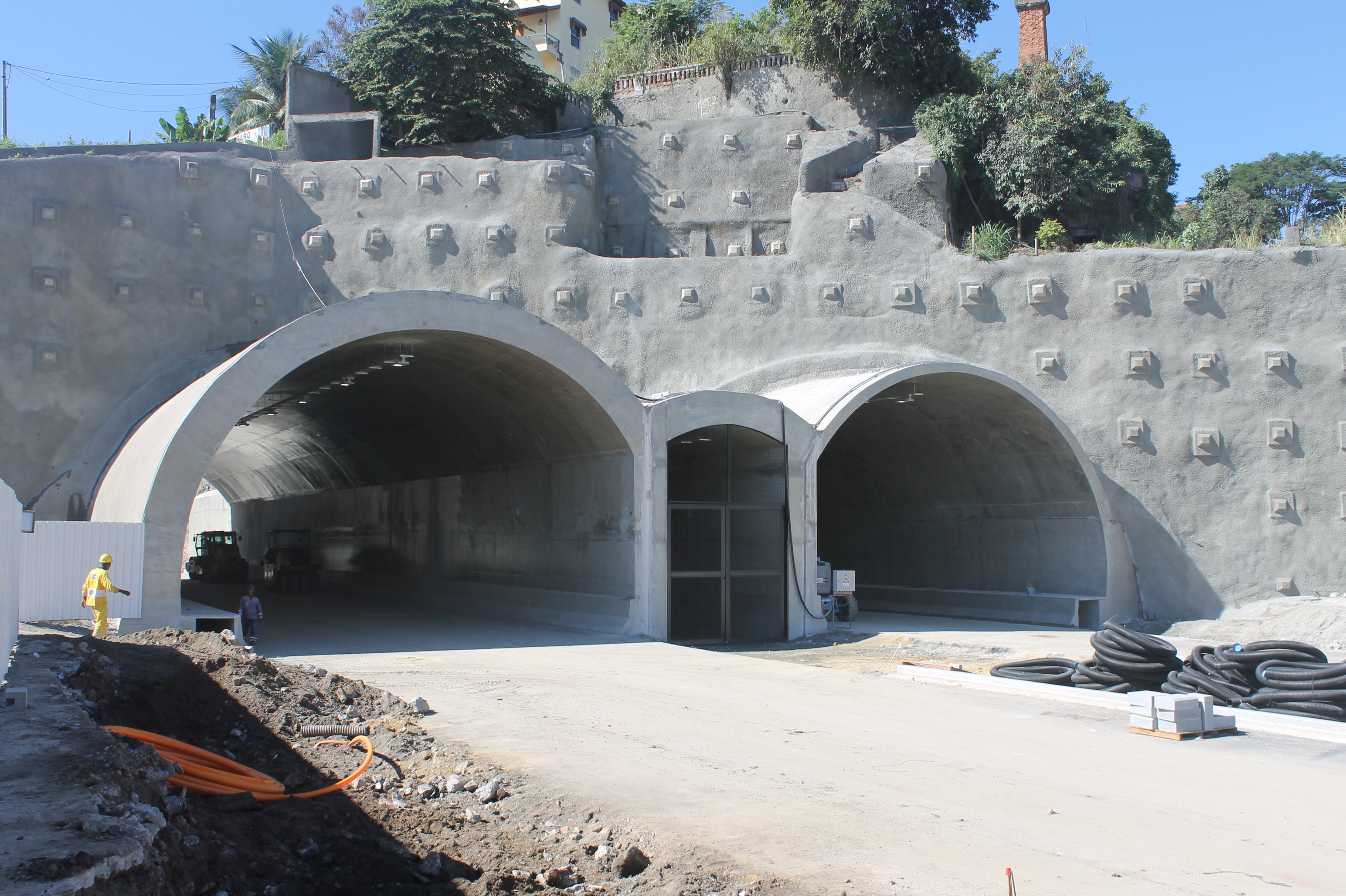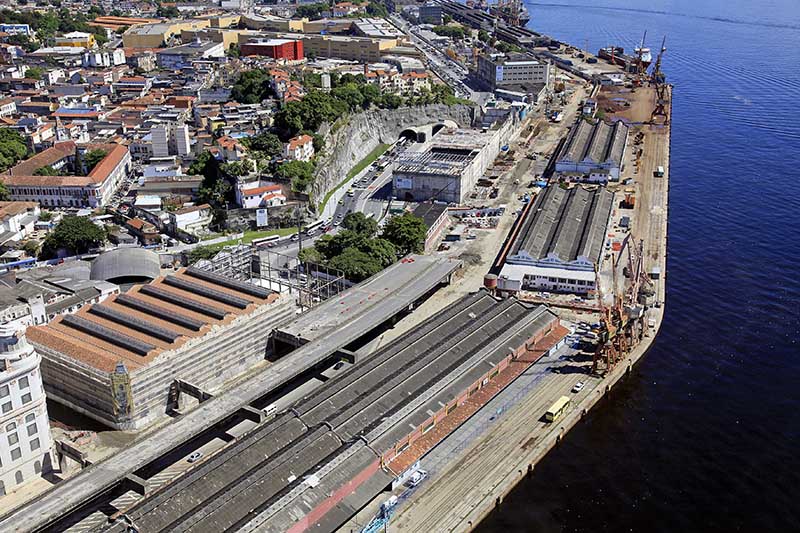In 2009, the Rio de Janeiro Port Region Urban Development Company (CDURP) was created. Its function is to promote the urban renovation of the waterfront, aiming to improve its current and future dwellers’ quality of life, and foster the region’s sustainable development. It oversees the activities of Porto Novo Concessionary, which executes the entire project. A single legal and funding framework was created, mixing public policy and market tools. It involves a unique Public-Private Partnership (PPP), the biggest being carried out in Brazil.
The project was developed in two phases.
First phase: “Change is on the way!”
The first one focused on infrastructure works, such as renewed sewage, drinking-water networks, telecommunications and street lighting public networks. In order to solve flooding problems, new water galleries were installed taking into account rising sea levels in the near future. Also in the first phase, the municipal government started the construction of the Rio Museum of Art (MAR), inaugurated on March 1, 2013.
Second phase: “Urbanize the region 2012-2016”
The second phase focus is on a new urban mobility model that prioritizes pedestrians and public transportation. The main works are the construction of the Binário Avenue, of an Underground Express Highway and the construction of 28 km of the Light Rail Transit Lane (LRT). These transformations are expected to result in the repopulation of the area, from 32.000 to 100.000 residents in 10 years, as well as to improve the quality of public services offered in the area. Sustainable measures will increase the green area cover from 2.5% to 11%, improving the soil permeability. Furthermore, water, air and noise pollution will be drastically reduced. Moreover, the establishment of a new mobility system that prioritizes pedestrians, cyclists and sustainable public transportation are going to increase the traffic flow capacity. The Porto Maravilha Urban Operation also benefits the whole city of Rio, mainly the neighborhood nearby the downtown area, such as Ilha do Fundão neighborhood. The infrastructure changes in the city enable the creation of an innovative and high technology area in that area: the High Technology Park of the Rio de Janeiro Federal University (UFRJ).
Main achievements of the program include:
(1) the construction of 4 km of tunnels, enabling more public spaces for pedestrians and cyclists;
(2) the reconstruction of 700 km in public networks for sanitation, sewage and drainage;
It is also important to mention that the city is creating a new fiber-optic communication network to be implemented as part of the underground reorganization of the waterfront area. This technology will provide the region with high quality telephone, internet and multimedia services. The minimum internet speed for the residents and enterprises in the area will be of approximately 1 Gigabyte (GB) and, in 10 years, it is expected to increase to 10 GB. The port area will have the best internet connection in Latin America. The region and the City of Rio will become a digital district of high connectivity. It will mean a great difference in the life of the cariocas, especially those that live in the region, since some neighborhoods do not have access to quality high-speed internet nor cable TV.
(3) the renovation of 70 km of streets and 650,000 m² of sidewalks;
(4) the construction of 17 km of bicycle paths;
(5) the planting of 15,000 trees;
(6) the demolition of 4,8 km of the Perimetral Elevated Highway to be replaced by a new route (Binário Avenue) and 4 km of tunnels, increasing in 30% the traffic capacity;
(7) investments in public transportation: construction of 28 km of Light Rail Transit (LRT), connected to the intermodal public transportation system (Bus Rapid Transit -BRT, urban trains, bus networks and subway lines);
(8) the improvement of the local drainage capacity and its adaptation to rising sea levels;
(9) the construction of museums, such as the Rio Museum of Art (MAR, in the Portuguese acronym), inaugurated in March 2013 and the Museum of Tomorrow;
(10) restoration of the historic and architectural heritage of the Port Region to be used as sociocultural public spaces such as Gamboa Warehouses, José Bonifácio Cultural Center and São Francisco da Prainha Church, besides the Dom João Palace, recovered to compose the Rio Museum of Art;
The Porto Maravilha CulturalProject celebrates the region’s heritage, creates new artistic and scientific museums as well as stimulates cultural activities, nurturing all types of artistic expressions. The heritage relevance of the waterfront area is also considered as a potential generator of employment and income. As far as the recognition, preservation and promotion of the region’s important historical value, the actions include restoration and rehabilitation of historical buildings, creating cultural circuits.
(11) the economic and social development of the Port Region through professional training and incentives for new entrepreneurs to employ residents;
The main ongoing projects are: professional capacity building (130 training courses already in activity), including training for micro and small enterprises. Furthermore, Porto Maravilha Cidadão Project publicizes employment opportunities in the area and incentives companies to hire local workers.
(12) the support to micro and small entrepreneurs with consulting services and business fairs aimed at strengthening the local business to assure their permanence in the region.
The Porto Maravilha Cidadão Project (Porto Maravilha Citizen, in English), created in partnership with other government agencies and social organizations, involves socioeconomic initiatives and housing programs. An important aspect related to the transformation of the waterfront area is the integration of the port region to the city downtown area through economic, social and cultural aspects and activities.
The project also includes a social housing program in partnership with the Municipal Housing Department, with 535 completed units. There are at least another 2,000 housing units for low-income family planned for the port region and residents living in areas without basic infrastructure.
Sustainable standards were also determined for the new buildings in the region, such as:
(1) adequate ventilation space between the buildings;
(2) decrease in the waste of clean water and a higher use of pluvial water;
(3) local generation of energy through solar power, and saving of clean energy;
(4) use of green roofs and reflective surfaces for solar light reflection;
(5) maximum ventilation and daylight;
(6) use of environmental and sustainable certified material;
(7) facilitation of use and bike access to the area.
Moreover, this program aims to enhance the dialogue between the local dwellers, local civil society and the municipal government. By doing so, the already existing community organizations may be strengthened as political channels. These organizations, acting as accountability mechanisms, create opportunities for citizens’ interests and their engagement in urban interventions. A total of R$ 2 million (approximately US$ 833,000) has already been invested in local organizations.







